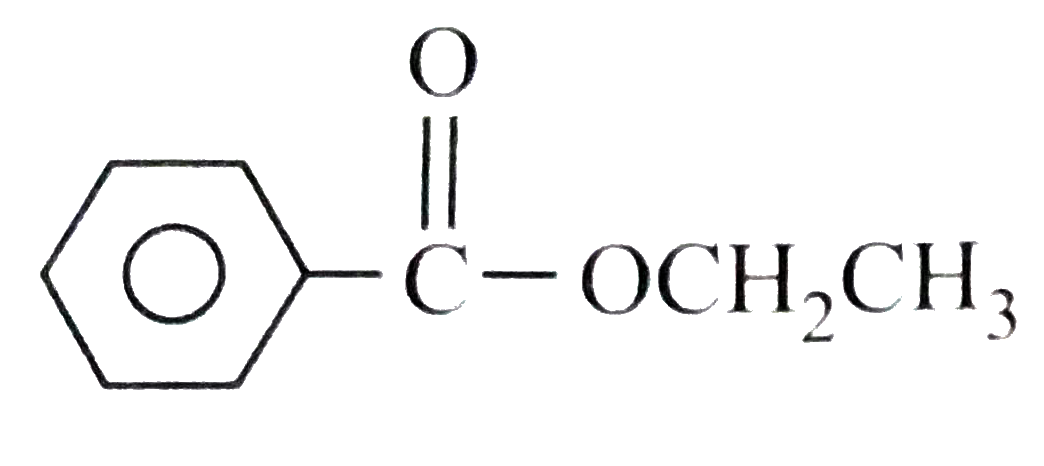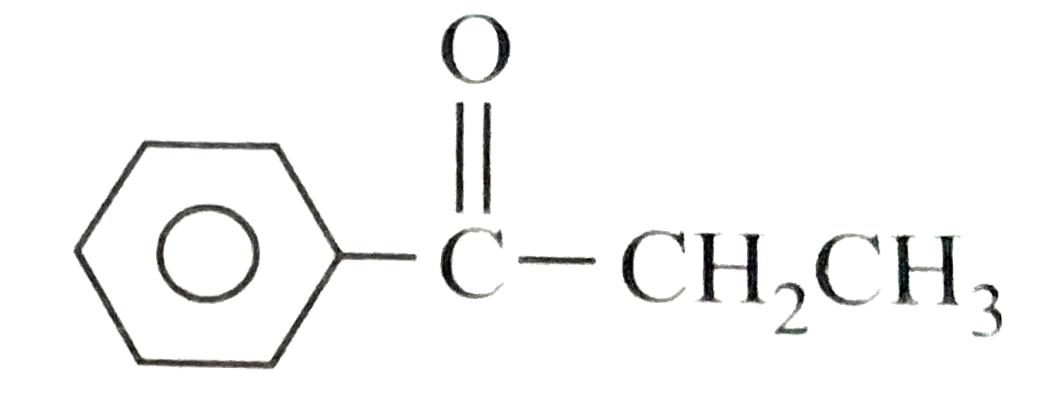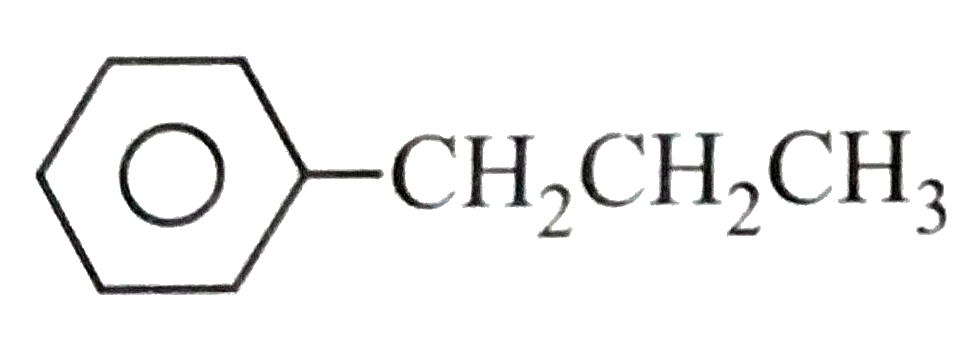Complete the reaction :
C6H5COONasodalime−−−−−−−→heatAC2H5Cl−−−−−−→AlCl3B
To complete the reaction given in the question, we will follow the steps outlined in the video transcript.
Step 1: Identify the Reaction of Sodium Benzoate with Soda Lime
The starting compound is sodium benzoate, which can be represented as C6H5COONa. When sodium benzoate is heated with soda lime (a mixture of sodium hydroxide and calcium oxide), a decarboxylation reaction occurs.
Reaction:
C6H5COONaheat, soda lime−−−−−−−−−→C6H6+Na2CO3
Explanation:
- During this reaction, the carboxyl group (−COOH) is removed, resulting in the formation of benzene (C6H6) and sodium carbonate (Na2CO3) as a byproduct.
- Therefore, the compound A formed in this step is Benzene (C6H6).
Step 2: Electrophilic Substitution Reaction of Benzene with Ethyl Chloride
Next, we take the benzene produced in Step 1 and react it with ethyl chloride (C2H5Cl) in the presence of aluminum chloride (AlCl3). This is an example of an electrophilic aromatic substitution reaction.
Reaction:
C6H6+C2H5ClAlCl3−−−→C6H5C2H5+HCl
Explanation:
- In this reaction, aluminum chloride acts as a catalyst and helps generate the ethyl cation (C2H+5), which is the electrophile.
- The ethyl cation then attacks the benzene ring, leading to the formation of ethyl benzene (C6H5C2H5) and hydrochloric acid (HCl) as a byproduct.
- Therefore, the compound B formed in this step is Ethyl Benzene (C6H5C2H5).
Summary of the Compounds
- Compound A: Benzene (C6H6)
- Compound B: Ethyl Benzene (C6H5C2H5)
---
C6H5COONaheat, soda lime−−−−−−−−−→C6H6+Na2CO3
- During this reaction, the carboxyl group (−COOH) is removed, resulting in the formation of benzene (C6H6) and sodium carbonate (Na2CO3) as a byproduct.
- Therefore, the compound A formed in this step is Benzene (C6H6).
C6H6+C2H5ClAlCl3−−−→C6H5C2H5+HCl
- In this reaction, aluminum chloride acts as a catalyst and helps generate the ethyl cation (C2H+5), which is the electrophile.
- The ethyl cation then attacks the benzene ring, leading to the formation of ethyl benzene (C6H5C2H5) and hydrochloric acid (HCl) as a byproduct.
- Therefore, the compound B formed in this step is Ethyl Benzene (C6H5C2H5).
- Compound A: Benzene (C6H6)
- Compound B: Ethyl Benzene (C6H5C2H5)
Topper's Solved these Questions
- HYDROCARBONS BOOK - ICSECHAPTER - HYDROCARBONS EXERCISE - VERY SHORT ANSWER TYEP QUESTIONS
47 Videos
- HYDROCARBONS BOOK - ICSECHAPTER - HYDROCARBONS EXERCISE - SHORT ANSWER TYEP QUESTIONS
81 Videos
- EQUILIBRIUM BOOK - ICSECHAPTER - EQUILIBRIUM EXERCISE - NCERT TEXT-BOOK EXERCISE
109 Videos
- HYDROGENBOOK - ICSECHAPTER - HYDROGENEXERCISE - NCERT TEXT-BOOK EXERCISE (With Hints and Solutions)
53 Videos
Similar Questions
Knowledge Check
Consider the following sequence of reactions.
C6H6+CH3CH=CH2H3PO4−−−−−−→heatA1.O2.heat−−−−−−−−−→2.H3O+,heatB+C
The products (B) and (C) are :Abenzaldehyde and acetaldehydeBbenzoic acid and acetic acidCphenol and propionaldehydeDphenol and acetoneProduct C in the reaction
C2H5BrNaOH−−−−−→(aqueous)ANa−−→BCH3I−−→C will beAPropaneBEthyl iodideCEthaneDEthyl methyl etherThe final product (C ) obtained in the reaction sequence is
CH3CH2COOHPCl3−−→(A)C6H6−−→AlCl3(B)NH2NH2−−−−−→base, heat(C)A B
B C
C D
D
Identify the product A,B,C and D
C6H6CH3Cl−−−−−−−−→Anhyd. AlCl3ACrO2Cl2−−−−→CCl4BConc.−−−→NaOHC+D.
View SolutionWhat would be the major products in the following reactions:
CH3−CH3∣C∣CH3−CH2BrC2H5OH−−−−→Δ
View SolutionWhat would be the major products in the following reactions:
CH3−CH3∣C∣CH3−CH2BrC2H5OH−−−−→Δ
View SolutionWhat would be the major products in the following reactions:
CH3−CH3∣C∣CH3−CH2BrC2H5OH−−−−→Δ
View SolutionIdentify the major product in the following reactions :
C6H5−CH2−H∣C∣Br−CH3Alc.KOH−−−−−→Δ?HBr−−→ ?
View Solution
